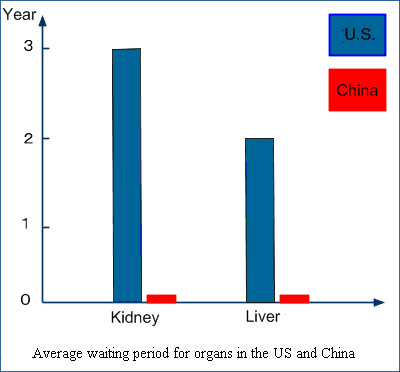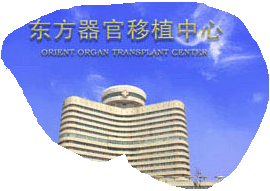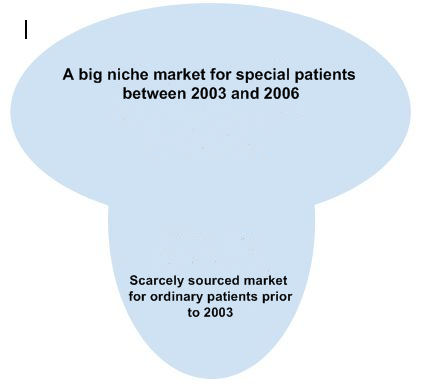(Clearwisdom.net) In 2006, The Epoch Times newspaper broke a stunning story about what is undoubtedly one of the most horrible atrocities to be committed by any government, not only in modern times, but in all of recorded history. As documented in the investigative report, "Bloody Harvest," by noted human rights lawyer David Matas and former Canadian Secretary of State for the Asia-Pacific region David Kilgour, there is overwhelming evidence of the Chinese Communist regime's chilling role in systematically murdering Falun Gong practitioners, harvesting their organs while they are alive, and making huge profits from doing so. In response to the international outcry, the Chinese regime has attempted to explain away one of the main pieces of circumstantial evidence--the meteoric rise in the number of organ transplantations in recent years and the extremely short wait times in a culture notoriously averse to organ donation--by stating that it has harvested organs from executed criminals after their deaths. Faced with undeniable evidence, it has attempted to escape culpability for a monstrous atrocity by admitting to a lesser crime. In this report, we will show evidence that directly contradicts this claim and lends further credence to the serious charges leveled against the Chinese regime.
Unprecedented market conditions for organ transplants between 2003 and 2006
By now, the readers may ask: Where did all the extra organs come from? Let us take a look at some unique features of the organ transplant market in China between 2003 and 2006.
1. Extraordinarily short waiting periods previously unseen
According to data published by the United States Department of Health and Human Services, the average waiting period for organs in the U.S. is two years for a liver and three years for a kidney. [27] In China, the waiting period for these organs at some hospitals is calculated in weeks.

The following table shows the average waiting period for organs published by three major organ transplant centers in China during the period of 2003 and 2006 versus that in the U.S. Such an extraordinarily short waiting period points to an extraordinary source of organs.
Average Waiting Period for Organs in China and the U.S.
|
| Oriental Organ Transplant Center (Tianjin No. 1 Central Hospital) | Organ Transplant Institute of the People's Liberation Army (Shanghai Changzheng Hospital) | CITNAC, China International Transplantation Network Assistance Center (The First Hospital of China Medical University in Shenyang) | U.S. data from www.organdonor.gov |
| Average Waiting Period | 2 weeks | 1 week for a liver transplant | 1-2 months for a liver. 1 week to 1 month for a kidney. If 1st surgery fails, 2nd surgery within 1 week. | (Liver 2 yrs; Kidney 3 yrs) 230 days for a heart 501 days for a pancreas 796 days for a liver 1,068 days for a lung 1,121 days for a kidney
|
(Source: See Appendix 7)
2. Expensive fees make organ transplants tremendously profitable
While fees for organ transplants vary between different hospitals, they are high across the board. Here is an example of fees for different organ transplants published by CITNAC.
Fees for Organ Transplants (U.S. Dollars)
| Kidney transplant | $62,000 |
| Liver transplant | $98,000 - $130,000 |
| Liver and kidney transplant | $160,000 - $180,000 |
| Kidney and pancreas transplant | $150,000 |
| Lung transplant | $150,000 - $170,000 |
| Heart transplant | $130,000 - $160,000 |
(Source: See Appendix 8)
According to a Phoenix Weekly report in 2006, as more and more overseas patients came to China for organ transplants, the fees gradually increased as well. In 2004, the fee for a liver transplant at the Oriental Organ Transplant Center was USD 32,000 (approximately 250,000 yuan). In 2005, it was over USD 40,000 (approximately 330,000 yuan). Some intermediary agencies charged a brokering fee as high as USD 13,000. In addition, overseas patients had to pay monthly fees to interpreters. Staying in the hospital also cost extra. [28] These extra fees explain the higher numbers listed in the table above.

Expensive fees, along with the cheap supply of organs, made organ transplants tremendously profitable. The Organ Transplant Center of the 309th Hospital of the People's Liberation Army stated, "The Organ Transplant Center is one of the most profitable departments. Gross income was 16,070,000 yuan for 2003 and 13,570,000 yuan for January through June in 2004. It is expected that the gross income will exceed 30,000,000 yuan in 2005." [29]
Southern Weekend [Nanfang Zhoumo] reported, "The Oriental Organ Transplant Center's rapid growth has brought about huge revenue and profits. According to previous media reports, liver transplants alone bring the Center an annual income of 100 million yuan (with the exchange rate at 8.11 yuan per US dollar)." [30] In September 2006, the Center put to use a new building with a price tag of 130 million yuan. The new building has 500 beds with a more than 10,000 overall annual turnover rate. The surgery center in the new building can support the operation of nine liver transplants and eight kidney transplants simultaneously. It is the largest, vertically integrated organ transplant center in Asia."
Such profit from organ transplants bore a grave consequence. On the one hand, people with financial means are willing to buy organs at a high cost. On the other hand, the huge profit pushes the hospitals to pursue new sources of organs by all means. Given China's political and legal environment, certain groups of people become especially susceptible targets.
3. China turns into a center for global organ transplant tourism
Given the fees involved, the majority of organ transplant patients in China are made up of:
-
Overseas patients (global organ transplant tourists)
-
Rich business owners, celebrities, and Communist government officials in mainland China
-
A small group of desperate, ordinary patients who exhaust all their financial resources for an organ transplant
According to a Lifeweek magazine report in 2004, most of the domestic patients are those who "have their own businesses or enterprises," or those who "have positions in the government." The report also stated that within a few years, thousands of overseas patients had gone to China for organ transplants, turning China into "a center for global organ transplant tourism." "Besides Korean patients, there are patients from more than 20 countries and regions in Asia such as Japan, Malaysia, Egypt, Pakistan, India, Saudi Arabia, Oman, Hong Kong, Macau, and Taiwan who have come to the Tianjin No. 1 Central Hospital (also known as the Oriental Organ Transplant Center) for organ transplants... The ward café looks like an international conference center where patients of different colors and ethnic backgrounds gather to share their medical experiences." [31] (In July 2007, the Ministry of Public Health in China put a stop on Chinese hospitals performing organ transplant surgeries on foreign patients.)
4. A niche market within China's limited organ market takes off

Exorbitant fees did not make the organ transplant market inaccessible. On the contrary, there was an unexpected, rapid growth in China's organ transplant market starting in 2003, with an annual growth of 5,000 to 10,000 or even more cases of organ transplants.
Every year, approximately 1.5 million people in China need organ transplants due to late-stage organ failures. The scarcity of organs was worse than that in the United States and other countries that have advanced organ transplant procedures. However, starting in 2003, China turned into a center for global organ transplant tourism due to its abundant source of organs. In a 2004 interview with Lifeweek magazine, Zheng Hong, deputy director of the Oriental Organ Transplant Center, proudly stated, "The availability of organs in China is in fact much better than that in other countries." [32]
So what was happening here?
In China's unregulated, overall limited organ market (small market), there is a niche market with abundant availability of organs for special patients (big market). We have to understand this "big market within the small market" phenomenon before we can fully understand the true situation of China's organ market.
In its denial of the allegations of live organ harvesting, the Chinese Communist regime claimed that there were more than 1 million patients in China waiting for organs. It used this as an argument that it was not possible to get matching organs within a short period of time. However, this denial was contradicted by claims at various organ transplant hospitals.
5. High quality organs used for overseas recipients
There were many abnormal phenomena in China's organ market during the 2003-2006 period. Besides the features discussed above, there is another one worth mentioning. The quality of the organs was not compromised as the quantity of organs increased. On the contrary, the quality of the organs supplied between 2003 and 2006 was superb. During the peak of China's global organ transplant tourism, the majority of China's organ transplant recipients were overseas patients. Similar to exported products, the organs used for these patients had much higher requirements.
In the Q&A section on its website, CITNAC provided this answer to the question on organ quality: "The live donor kidney transplant provided in China is completely different from the cadaver donor kidney transplant provided by hospitals and dialysis centers in Japan." "The key to kidney transplants is tissue matching. Before the live donor kidney transplant surgery, we test the functions of the donor kidney as well as the donor's white blood cells to ensure the safety of the donor kidney. It is safe to say that compared to a cadaver donor kidney transplant in Japan, kidney transplants are much safer and more reliable here." (See Appendix 9 for reference.) The 'live donor' characteristic is the selling point to attract overseas patients.
Some independent overseas investigators have phoned organ transplant hospitals in mainland China, posing as patients or patient family members, to inquire about organ transplant information. The answers given were similar: "Donors are all healthy," "Donors are around 30 years old," "Quality is guaranteed to be the best." [33]
6. Sudden disappearance of the abundant donor resources after 2006
Under normal conditions, the availability of organs is rather steady, which, as we discussed earlier, is the case for Canada and the United States, where there has been no major increase or sudden decrease in the past decade. A drastic increase of organs was seen between 2003 and 2006 in China. But after the allegations of live organ harvesting of Falun Gong practitioners surfaced and attracted international attention in March 2006, there was a sudden drop in organ transplants in 2007 in China.
While denying the allegations of live organ harvesting of Falun Gong practitioners, the Chinese Communist regime accelerated the reorganization of its organ transplant market. It introduced several acts to regulate organ transplants and restricted the number of organ transplant hospitals to be by "permission only." Out of more than 600 previously existing organ transplant hospitals, only 160 received permission to continue operations.
Is the reduction in the number of organ transplant hospitals the reason for the reduction in organ transplants? It is certainly not. At least, this is not the root cause. The reduction in the number of permitted hospitals should lessen the competition for organs. If there is no major change to the source of organs, there should now be more organs available to those major hospitals. Yet, the number of organ transplants at these major hospitals has decreased drastically. Therefore, the issue lies in the disappearance of donor resources, rather than the number of organ transplant hospitals.
In an interview with Science Times in May 2007, Shi Bingyi, director of the Organ Transplant Center of the People's Liberation Army and member of the standing committee of the Chinese Medical Association Organ Transplant Society, said, "The number of organ transplants in China reached a historic peak in 2006, in which nearly 20,000 cases of organ transplants were performed. For the first five months in 2007, the number of organ transplants has decreased compared to that of the same period in 2006, largely due to the shortage in organ donors." [34]
An article published in Nanfang Zhoumo in July 2007 describes the issue further: "Organ transplant surgeons complained about the shortage of organ donors." "Zhu Zhijun is the deputy director of the Orient Organ Transplant Center. In his office on the second floor of the Center, Zhu appeared to be worried. He told the reporter that since the Chinese New Year, the Center, which is the biggest organ transplant facility in Asia, has performed only 15 liver transplants in nearly six months, while in 2006, the Center had set a record of more than 600 liver transplants in one year." [35]
Relatively Stable Supply of Death Row Organs
Earlier we assumed that the number of organs from death row inmates is relatively stable. Prior to 2003 and after 2006, the number was around 6,000. Several factors contributed to this stability:
1) Organ transplant technology and the use of immune depressants matured in the late 1990s. There was no sudden increase in the number of organ transplants as a result of breakthroughs in technology.
2) Matching requirements for organ transplants remain high; technology has not lessened these requirements, making the same organ resource relatively stable.
3) Lack of an organ sharing network in China, which means most of the matches take place between a local hospital and local death row inmates. This and local protectionism have limited the scope of matching.
4) Death row sentencing is in lock-step with political direction. With no recent Strike-Hard campaigns, the number of death row executions is relatively stable.
5) The legitimacy of using death row organs, as well as the moral acceptance among Chinese due to years of indoctrination that organ donation is the least contribution death row inmates could make to society, have allowed the organ transplant hospitals in China to care less about pressures from the international community.
Based on the above reasons, it can be concluded that organs from executed death row inmates are a relatively stable source of organs, and not responsible for the spike in 2003-2006, or for the subsequent sharp decline.
Impact of the Supreme People's Court's Ruling on Death Row Organs
On January 1, 2007, the Supreme People's Court reclaimed the right to review death row sentences from the provincial supreme courts, resulting in the reduction of death row sentences. Was this the cause for the severe shortage of organ donors in 2007? It had an impact but was not the root cause. According to a Xinhua News Agency report on March 10, 2008, after the Supreme People's Court's reclamation of reviewing death sentences, 15% of death row sentences were overturned in 2007. [36] This percentage (likely to be overestimated) indicates that the recovery did not have a large impact on organs available from the executed death row inmates. This can be supported by the actual number of organ transplants performed. In the section, "Reference to Historic data" in Chapter I, we quoted China Daily that 65% of organs came from death row inmates in 2008 and 2009, in which close to 10,000 cases of organ transplants were performed each year. That means that approximately 6,000 organs came from death row inmates, which is close to the level between 2000 and 2002.
Therefore, the sudden decrease in organs in 2007 has to be due to the sudden disappearance of other organ resources (although it is still uncertain whether they have completely disappeared).
In conclusion, the rapid growth between 2003 and 2006 and the ensuing quick disappearance of organ resources in China are unprecedented in history and bear unique features that are not supported by the theory that death row inmates were the main source of organs during the years in question.
Since 2007, due to the shortage of organ donors, live related donors have become a new source of organs. Chinese media have also carried out extensive campaigns on this subject in an effort to raise awareness. According to a People's Net report, the Oriental Organ Transplant Center in Tianjin performed 84 cases of live donor liver transplants in 2007 (with a relative donating a partial liver). [37] However, since live donors did not become a major organ resource until after 2006, this does not help explain the period between 2003 and 2006, when China's organ market skyrocketed.
[27] U.S. Department of Health and Human Services, "The Matching Process -- Waiting List," website maintained by the Health Resources and Services Administration (HRSA), Healthcare Systems Bureau (HSB), Division of Transplantation, an agency of the U.S. Department of Health and Human Services, http://www.organdonor.gov/transplantation/matching_process.htm
[28] Chen Yanhui, "Investigation on Global Organ Transplants - Thousands of Foreigners Rushing to China for Organ Transplants, Mainland China Becoming New Center for Global Organ Transplants," Phoenix Weekly, 2006, No, 5, http://news.phoenixtv.com/phoenixtv/83932384042418176/20060222/751049.shtml
[29] Organ Transplant Center of the 309th Hospital of the PLA, "Brief Introduction of the Organ Transplant Center of the 309th Hospital of People's Liberation Army," the Center has deleted certain contents in its introduction, but Chinaaffairs.org has saved all related information, http://www.chinaaffairs.org/gb/detail.asp?id=61744 or http://www.aibang.com/detail/828118414-695423180
[30] Southern Weekend [Nanfang Zhoumo], China stops organ transplant tourism, July 18, 2007, http://www.infzm.com/content/9556
[31] Wang Hongliang, "Investigation in Tianjin: No. 1 Organ Transplant [Facility] in Asia," Lifeweek Magazine, September 22, 2004, http://www.lifeweek.com.cn/2004-09-23/000019783.shtml
[32] Wang Hongliang, "Investigation in Tianjin: No. 1 Organ Transplant [Facility] in Asia," Lifeweek Magazine, September 22, 2004, http://www.lifeweek.com.cn/2004-09-23/000019783.shtml
[33] World Organization to Investigate the Persecution of Falun Gong (WOIPFG), "Telephone Messages: Evidences of Harvesting Organs from Live Falun Gong Practitioners in China," http://www.zhuichaguoji.org/en/index2.php?option=content&task=view&id=168&pop=1&page=0
[34] Science Times, "Shortage of Organ Donors is the Bottleneck in Developing Organ Transplants," http://www.sciencenet.cn/html/showsbnews1.aspx?id=182075
[35] Southern Weekend [Nanfang Zhoumo], China stops organ transplant tourism, July 18, 2007, http://www.infzm.com/content/9556
[36] Xinhua News Agency, "China's Death Row Sentences with Immediate Execution Dramatically Reduced," March 10, 2008. http://news.xinhuanet.com/misc/2008-03/10/content_7761537.htm
[37] The People's Daily website, "Tianjin Orient Organ Transplant Center Performed 84 Cases of Live Donor Liver Transplants in 2007," Windows on Tianjin section, http://www.022net.com/2007/12-25/425567353391331.html
Category: Organ Harvesting





